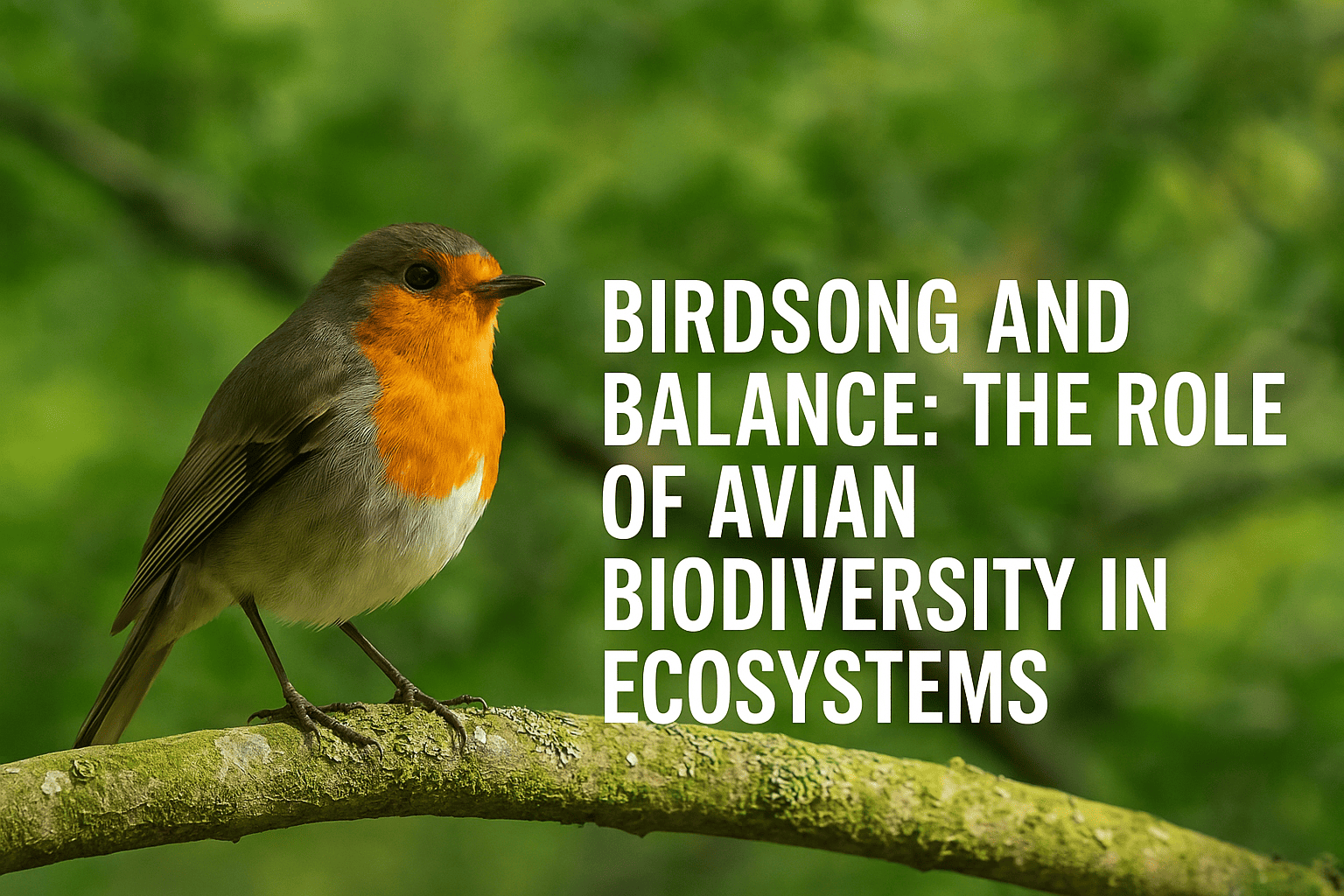Birds are among the most diverse and widely distributed vertebrates on Earth, with over 10,000 species inhabiting ecosystems across the globe. Their songs mark the rhythm of nature, their migrations reflect seasonal changes, and their behaviors impact ecological processes in profound ways. Avian biodiversity plays a central role in maintaining ecosystem health, yet it is under increasing pressure from habitat loss, climate change, and human activities. This blog examines the significance of bird diversity …
Ecological Functions of Birds
Birds contribute to ecosystem balance through several key ecological roles:
- Seed Dispersal
Frugivorous birds, such as toucans and hornbills, consume fruits and disperse seeds across wide areas, facilitating plant regeneration and forest succession. A 2021 study published in *Nature Communications* showed that bird-mediated seed dispersal supports higher plant diversity than non-avian vectors.
- Pest Control
Insectivorous birds help regulate pest populations. For example, barn swallows and flycatchers consume vast numbers of crop-damaging insects. In agricultural landscapes, avian pest control can reduce the need for chemical pesticides, promoting sustainable farming.
- Pollination
Though not as prominent as insects in this role, some bird species, such as hummingbirds and sunbirds, pollinate flowering plants, particularly in tropical and subtropical ecosystems.
- Scavenging and Carrion Removal
Scavengers like vultures and condors perform a vital sanitation service by consuming dead animals, thereby reducing the spread of disease and maintaining nutrient cycling.
Indicators of Environmental Change
Birds are sensitive to changes in habitat quality, pollution levels, and climate patterns. Because of their mobility and habitat specificity, they serve as early warning indicators of ecosystem degradation.
– The Audubon Society’s 2019 report linked the projected loss of nearly two-thirds of North American bird species to unmitigated climate change.
– Declines in grassland and migratory bird populations often signal broader landscape disruptions, such as overgrazing, wetland drainage, and forest fragmentation.
Threats to Avian Biodiversity
- Habitat Destruction
Deforestation, urban expansion, and agriculture eliminate nesting and feeding grounds. In Southeast Asia, logging and palm oil plantations have drastically reduced forest-dependent bird populations.
- Climate Change
Shifts in temperature and precipitation patterns affect bird migration, breeding cycles, and food availability. Alpine and polar species are particularly vulnerable due to shrinking habitat zones.
- Light and Noise Pollution
Artificial light interferes with nocturnal navigation, leading to fatal collisions and disrupted migratory behavior. Noise pollution can mask birdsong, impacting territory defense and mating success.
- Invasive Species
Non-native predators such as domestic cats, rats, and snakes have decimated native bird populations on islands and in isolated ecosystems.
- Hunting and Trade
Illegal trapping and the pet trade continue to threaten exotic and endangered bird species, particularly in parts of Africa, South America, and Southeast Asia.
Case Studies in Avian Decline
India’s House Sparrow Decline: Once abundant in urban areas, sparrows have declined sharply due to electromagnetic radiation, pesticide use, and architectural changes.
The Silent Forests of Guam: The introduction of the brown tree snake led to the extinction of nearly all native forest bird species.
North American Grassland Birds: Species like the Eastern Meadowlark and Bobolink are in steep decline due to intensive agriculture and monoculture expansion.
Conservation Strategies
Habitat Protection and Restoration
– Protected areas like Important Bird and Biodiversity Areas (IBAs) focus on conserving critical habitats.
– Reforestation, wetland restoration, and urban green spaces enhance bird diversity in both wild and human-modified landscapes.
Policy and Legislation
– The Migratory Bird Treaty Act (MBTA), Birds Directive (EU), and the Convention on Migratory Species (CMS) provide legal frameworks for bird protection.
– Regional policies must integrate bird conservation into land-use planning and development.
Citizen Science and Monitoring
Initiatives like the Cornell Lab of Ornithology’s eBird platform engage the public in monitoring bird populations, generating valuable data for conservation.
Community Engagement and Education
Programs that educate local communities about the ecological value of birds can shift perspectives from exploitation to stewardship. Birdwatching tourism, for example, creates economic incentives for habitat conservation.
The Future of Avian Biodiversity
Technological advancements are enhancing our understanding of avian ecology. Satellite tracking, bioacoustic monitoring, and machine learning are being used to study migration patterns, detect population changes, and identify threats in real time.
However, long-term conservation success requires integrating scientific knowledge with policy reform, public awareness, and cross-sector collaboration.
Conclusion
Avian biodiversity is more than just a measure of species richness—it is a cornerstone of ecological integrity. Birds not only reflect the health of ecosystems but also actively sustain it through their diverse roles. As their songs grow quieter in many parts of the world, the urgency to protect avian life becomes more pressing. By preserving bird habitats and reducing anthropogenic pressures, we not only safeguard birds, but also the intricate web of life they help sustain.

